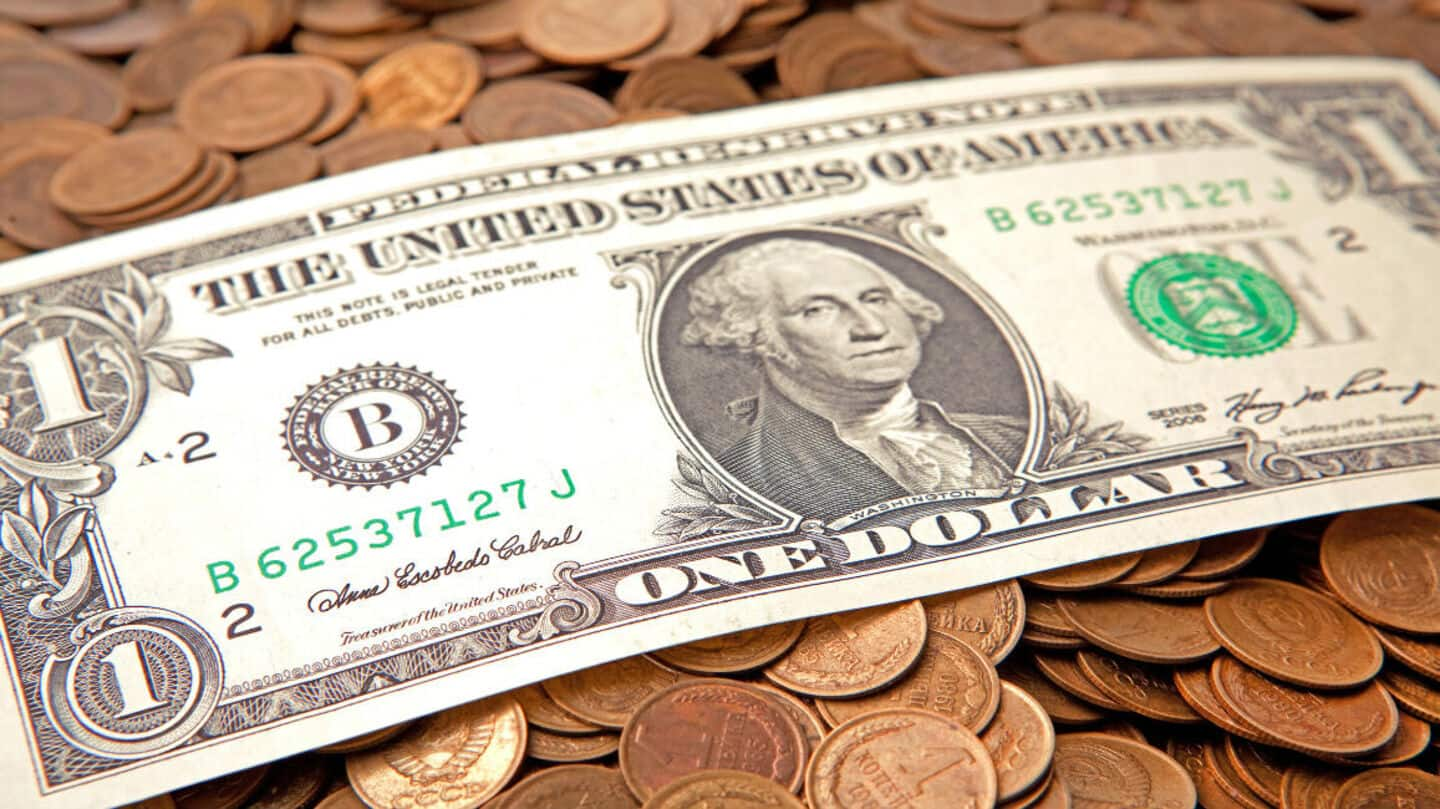
US dollar falls to 5-week low: Here we decode why
What's the story
The US dollar has hit a five-week low as traders await important labor market data from the United States. The dollar fell 0.22% against a basket of currencies to trade at 97.64, after hitting its lowest level since July 28 at 97.552 earlier today. The decline comes amid expectations of potential monetary easing by the Federal Reserve.
Rate expectations
Market anticipates significant rate cuts
The CME FedWatch tool shows that money markets are pricing in a 90% chance of a 25-basis-point rate cut by the Fed this month. They also expect around 100 basis points of easing by autumn 2026. The dollar's decline follows Friday's US inflation figures and a court ruling declaring most of Donald Trump's tariffs illegal.
Economic outlook
US economy no longer outperforming
Analysts have suggested that the US economy is no longer outperforming as it did for much of the last decade, which justifies a weaker dollar. Further signs of a softening labor market are expected to support this view. "Severe weakness would point to an even more forceful Fed response than market pricing predicts," Societe Generale economist Klaus Baader said.
Currency fluctuations
Euro and pound gain against dollar
The euro gained 0.35% to $1.1724, while the pound rose 0.18% to $1.3528. However, political risks are in focus as the French government faces a likely defeat in a confidence vote over plans for sweeping budget cuts. Analysts have noted that such risks generally weigh on currency only when there are clear signs of contagion within the euro area, which isn't evident at present.
Market impact
Concerns over Fed independence
The dollar has also been weighed down by concerns over Fed independence as Trump intensifies his efforts to assert more control over monetary policy. "Fiscal dominance risks should be more clearly apparent in both higher long-end US inflation break-evens and a higher risk discount on the dollar, none of which is materializing yet," George Saravelos, head of forex strategy at Deutsche Bank, said.